-
Company
-
Sectors
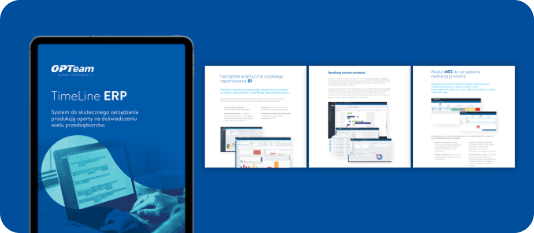
-
IT solutionsIT solutions
-
Cybersecurity

-
IT infrastructure
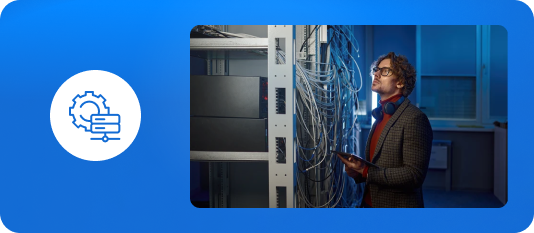
- Apollo ECI
- Data Center
- ECI Telecom
- Neptune ECI
- LAN and WiFi network systems
- Hosting services
- Backup systems
- OT network systems
- IT consulting
- Servers, arrays, networks
- Outsourcing services
- Guaranteed power supply systems
- Low-current installations
- Computer and printing equipment
- Service contracts
- Cloud services
- Virtualization
-
ERP and BI systems

-
Systems for production
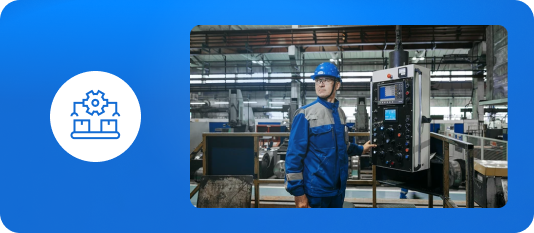
-
Warehouse management systems (WMS)

-
Personnel and HR systems

-
Systems for universities

- University Study Management System
- Teta EDU
- Student e-file
- Online Candidate Registration
- OPTiDrop App
- Student Extranet
- Electronic Attendance List
- System of Academic Career Offices
- Electronic Room Reservation System
- OPTicamp academic teacher electronic ID card
- OPTicamp electronic PhD student ID card
- OPTicamp electronic student ID
-
Workflow and applications
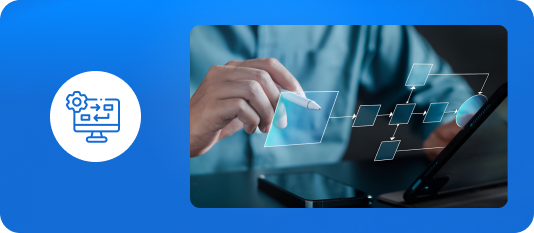
-
CMS system and websites

-
Chatbots

-
Web platforms and applications

-
Other technologies
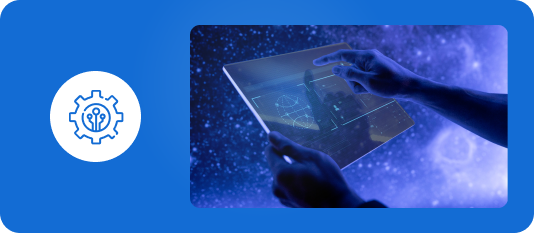

-
-
Knowledge
-
Contact
Which electronic document flow system should you choose?
The best electronic document workflow system is the one that provides the best return on investment. Assuming we want a system with the highest ROI, we should carefully consider where to actually look for a return on investment in a document workflow system.
When choosing a system for building electronic document workflows, it's important to always keep your organization's future needs in mind. Therefore, it's important to choose a modern solution that allows for quick and precise modeling of document workflow processes. Furthermore, the more modern the solution you choose, the longer you'll be able to use it, with relatively low development costs. To choose the right solution, it's worth answering a few questions:
Do you like the vendor's implementation team?
It's crucial that the implementation team has knowledge of both the workflow system and the organization's operations. This will help avoid often costly problems and ensure smooth project implementation. Communication with those responsible for designing process management and implementing them on the platform is equally important. The better this communication, the easier and less costly it will be to launch a document workflow system.
Example
For one of our clients, we simultaneously implemented several workflows, including employee applications for Employee Benefits Fund benefits, processing and approving purchase invoices, correspondence management with a document repository, and registering and approving purchase requests. With such intensive project work for departments with varying needs, seamless communication between the business parties and the implementation team proved crucial. Thanks to efficient exchange of information regarding the modeled processes, subsequent tasks were completed smoothly and on schedule. As a result, the implementation team completed the project on time, providing the client with tools tailored to the specific processes implemented in the organization's departments.
What does the system's user interface look like?
An electronic document flow system should be easy for users to use. Therefore, it's worth checking whether your employees like it and can easily navigate it. It's crucial that all supported processes share common interface elements. This will make it easier for your employees to learn how to use any new processes implemented in the future.
However, a user-friendly and intuitive interface isn't everything. It often happens that it must be individually customized for certain processes. Therefore, the ability to rearrange its elements depending on the process and communication channel is crucial.
Example
The nAxiom low-code platform offers a wide range of interfaces, allowing you to design and implement individually tailored electronic document workflows. If the existing interfaces prove insufficient, new ones can be easily defined. This is achieved by creating dedicated components and packages, which are added as additional elements that extend the nAxiom platform's capabilities.
How extensive are the configuration options?
The more configurable the system, the better for the organization. Processes in the system can then be reflected in full detail, encompassing all potential paths and variants. This allows for even faster processing.
Support for at least basic standards will certainly be necessary, including compatibility with popular products on the market (e.g., MS Office). However, a process digitization platform should also enable integration and data exchange with other IT systems. This will allow all processes implemented within the organization to be interconnected. This will ensure their smooth operation and, additionally, provide more complete control over all parameters.
The ability to prototype is also very useful. The sooner you see the system model, the better you will refine it and the sooner you will be able to verify its effectiveness. Already at this stage, you will learn which elements were not included in the process or which of the adopted solutions will not work in practice. This will help avoid many problems and costs associated with necessary, extensive modifications to processes launched in an environment without a prototyping phase.
Example
With the nAxiom platform, prototyping changes can even occur while the application is in use, without any disruption to the ongoing process. Once the modifications are approved, the updated version of the solution is immediately made available to users.
Is it possible to monitor process efficiency?
Monitoring the parameters of individual processes is crucial when operating an electronic document flow system or managing processes and applications in general. It allows for identifying trends and rationally managing resources. This applies to both monitoring the technical parameters of the platform on which process management is embedded and parameters related to the execution of individual processes. The former provides an overview of the technical condition and performance of IT tools, while the latter provides basic information for the company, illustrating its operation.
When choosing a document flow system, it's worth paying special attention to its monitoring capabilities. Such a system should allow for appropriate and flexible control configuration depending on the unit and the person responsible for the task. This will save employees significant time spent preparing various ad hoc reports.
Related articles
Polityka prywatności
Klauzula Informacyjna - przetwarzanie danych osobowych w OPTeam S.A.
Ochrona prywatności użytkowników Internetowych serwisów OPTeam SA jest dla nas bardzo ważna.
Niniejsza polityka zawiera informacje dotyczące gromadzonych danych oraz zasad ich przetwarzania i wykorzystywania we wszystkich serwisach www prowadzonych i utrzymywanych przez OPTeam SA. Wykorzystanie i zbieranie informacji o użytkownikach Internetowych serwisów ograniczane jest do niezbędnego minimum wymaganego do świadczenia przez OPTeam SA usług na najwyższym poziomie. Polityka prywatności zawiera informacje na temat narzędzi stosowanych przez OPTeam SA w celu zapewnienia jak największej wygody korzystania z Internetowych serwisów (cookies, logi systemowe) oraz o danych zbieranych przez podmioty zajmujące się analityką serwisów. Polityka określa ponadto w jaki sposób chronimy Twoje dane, jakie prawa Ci przysługują oraz w jaki sposób możesz je wykonywać. Jednocześnie wskazane zostały narzędzia służące do zarządzania wyrażonymi przez Ciebie zgodami.
Jakie dane zbieramy?
OPTeam dokłada wszelkich starań, żeby Internetowe serwisy informacyjne były wygodne w użyciu. Dla zwiększenia wydajności serwisów stosowana jest technologia anonimowych cookies oraz pobierane są dane statystyczne o najczęściej poszukiwanych, za pomocą wyszukiwarki frazach, dzięki czemu aktualizowana jest na bieżąco nawigacja serwisu, żeby wyszukiwanie treści było wygodne i intuicyjne.
Przetwarzamy dane, żeby:
- dopasować prezentowane treści do potrzeb i zainteresowań użytkowników,
- zapewnić bezpieczeństwo usług,
- prezentować informacje o produktach i usługach dopasowane do potrzeb i zainteresowań użytkowników,
- dokonywać pomiarów, które pozwalają udoskonalać oferowane produkty i usługi.
Cookies (ciasteczka).
Serwis nie zbiera w sposób automatyczny żadnych informacji, z wyjątkiem informacji zawartych w plikach cookies.
- Pliki cookies (tzw. "ciasteczka") stanowią dane informatyczne, w szczególności pliki tekstowe, które przechowywane są w urządzeniu końcowym Użytkownika Serwisu i przeznaczone są do korzystania ze stron internetowych Serwisu. Cookies zazwyczaj zawierają nazwę strony internetowej, z której pochodzą, czas przechowywania ich na urządzeniu końcowym oraz unikalny numer.
- Podmiotem zamieszczającym na urządzeniu końcowym Użytkownika Serwisu pliki cookies oraz uzyskującym do nich dostęp jest OPTeam SA, Tajęcina 113, 36-002 Jasionka.
- Pliki cookies wykorzystywane są w celu:
- dostosowania zawartości stron internetowych Serwisu do preferencji Użytkownika oraz optymalizacji korzystania ze stron internetowych; w szczególności pliki te pozwalają rozpoznać urządzenie Użytkownika Serwisu i odpowiednio wyświetlić stronę internetową, dostosowaną do jego indywidualnych potrzeb;
- tworzenia statystyk, które pomagają zrozumieć, w jaki sposób Użytkownicy Serwisu korzystają ze stron internetowych, co umożliwia ulepszanie ich struktury i zawartości
- utrzymanie sesji Użytkownika Serwisu (po zalogowaniu), dzięki której Użytkownik nie musi na każdej podstronie Serwisu ponownie wpisywać loginu i hasła.
- W ramach Serwisu stosowane są dwa zasadnicze rodzaje plików cookies: "sesyjne" (session cookies) oraz "stałe" (persistent cookies). Cookies "sesyjne" są plikami tymczasowymi, które przechowywane są w urządzeniu końcowym Użytkownika do czasu wylogowania, opuszczenia strony internetowej lub wyłączenia oprogramowania (przeglądarki internetowej). "Stałe" pliki cookies przechowywane są w urządzeniu końcowym Użytkownika przez czas określony w parametrach plików cookies lub do czasu ich usunięcia przez Użytkownika.
- W ramach Serwisu stosowane są następujące rodzaje plików cookies:
- "niezbędne" pliki cookies, umożliwiające korzystanie z usług dostępnych w ramach Serwisu, np. uwierzytelniające pliki cookies wykorzystywane do usług wymagających uwierzytelniania w ramach Serwisu;
- pliki cookies służące do zapewnienia bezpieczeństwa, np. wykorzystywane do wykrywania nadużyć w zakresie uwierzytelniania w ramach Serwisu;
- "wydajnościowe" pliki cookies, umożliwiające zbieranie informacji o sposobie korzystania ze stron internetowych Serwisu;
- "funkcjonalne" pliki cookies, umożliwiające "zapamiętanie" wybranych przez Użytkownika ustawień i personalizację interfejsu Użytkownika, np. w zakresie wybranego języka lub regionu, z którego pochodzi Użytkownik, rozmiaru czcionki, wyglądu strony internetowej itp.;
- "reklamowe" pliki cookies, umożliwiające dostarczanie Użytkownikom treści reklamowych bardziej dostosowanych do ich zainteresowań.
- W wielu przypadkach oprogramowanie służące do przeglądania stron internetowych (przeglądarka internetowa) domyślnie dopuszcza przechowywanie plików cookies w urządzeniu końcowym Użytkownika. Użytkownicy Serwisu mogą dokonać w każdym czasie zmiany ustawień dotyczących plików cookies. Ustawienia te mogą zostać zmienione w szczególności w taki sposób, aby blokować automatyczną obsługę plików cookies w ustawieniach przeglądarki internetowej bądź informować o ich każdorazowym zamieszczeniu w urządzeniu Użytkownika Serwisu. Szczegółowe informacje o możliwości i sposobach obsługi plików cookies dostępne są w ustawieniach oprogramowania (przeglądarki internetowej).
- Operator Serwisu informuje, że ograniczenia stosowania plików cookies mogą wpłynąć na niektóre funkcjonalności dostępne na stronach internetowych Serwisu.
- Pliki cookies zamieszczane w urządzeniu końcowym Użytkownika Serwisu i wykorzystywane mogą być również przez współpracujących z operatorem Serwisu reklamodawców oraz partnerów.
- Więcej informacji na temat plików cookies dostępnych jest pod adresem www.wszystkoociasteczkach.pl lub w sekcji "Pomoc" w menu przeglądarki internetowej.
- Strona korzysta z narzędzi analitycznych Google Tag Manager należących do Google LLC, 1600 Amphitheatre Parkway, Mountain View, CA 94043, Stany Zjednoczone, które pozwalają monitorować działania (tzw. zdarzenia) wykonywane przez Ciebie podczas wizyty na Stronie, takie jak np.: kliknięcie w przycisk, przesłanie formularza kontaktowego, pobranie pliku. W tym celu wykorzystywane są pliki cookies Google LLC dotyczące usługi Google Tag Manager. Szczegółowe informacje związane z przetwarzaniem danych przez Google Analytics są udostępnione przez Google na stronie: https://support.google.com/tagmanager/answer/9323295?hl=pl.
- Strona korzysta z narzędzi analitycznych Google Analytics należących do Google LLC, 1600 Amphitheatre Parkway, Mountain View, CA 94043, Stany Zjednoczone, które zbierają informacje na temat Twoich odwiedzin Serwisu, takie jak: wskazanie stron, które wyświetliłeś, czas, jaki spędziłeś na stronie czy przejścia pomiędzy poszczególnymi stronami. W tym celu wykorzystywane są pliki cookies Google LLC dotyczące usługi Google Analytics. Szczegółowe informacje związane z przetwarzaniem danych przez Google Analytics są udostępnione przez Google na stronie: https://support.google.com/analytics/answer/6004245.
- Strona korzysta z narzędzi analitycznych Google Search Console należących do Google LLC, 1600 Amphitheatre Parkway, Mountain View, CA 94043, Stany Zjednoczone, które pomagają monitorować, utrzymywać i rozwiązywać problemy związane z obecnością witryny w wynikach wyszukiwania Google. Szczegółowe informacje związane z przetwarzaniem danych przez Google Search Console są udostępnione przez Google na stronie: https://support.google.com/webmasters/answer/9128668?hl=pl. Wszelkie pozostałe informacje związane z prywatnością i bezpieczeństwem danych gwarantowanych przez Google, można znaleźć pod adresem: https://policies.google.com/privacy?hl=pl.
- Serwis korzysta z narzędzia analitycznego HotJar należącego do HotJar, Level 2, St Julian’s Business Centre 3, Eliza Zmmit Street, St Julian’s ST 1000, Malta, które śledzi Twoje zachowanie podejmowanie w obrębie Serwisu. W tym cellu wykorzystywane sa pliki cookies. Z pomocą HotJar analizowane są zachowania Użytkownika, tj. czas spędzony na poszczególnych stronach, przyciski, w które klika, linki, z których korzysta itp. Więcej informacji odnajdziesz w polityce prywatności HotJar: https://www.hotjar.com/legal/policies/privacy.
- Z narzędzia lead generation Bazo, które identyfikuje ruch na stronie (wizyty na podstronach serwisu). Narzędzie należy do Bazo Sp. z o.o., ul. Bohdana Dobrzańskiego 3, 20-262 Lublin, Regon: 364959893, NIP: 9462661611. Szczegółowe informacje związane z przetwarzaniem danych przez Google Analytics są udostępnione przez Google na stronie: https://bazo.io/pl/polityka-prywatnosci.
- Menadżera Kampanii LinkedIn, systemu reklamowego należacego do Microsoft z siedzibą Redmond, WA 98052-7329 USA. Więcej informacji odnajdziesz w polityce prywatności: https://www.linkedin.com/legal/privacy-policy?trk=homepage-basic_footer-privacy-policy.
- Menadżera Reklam Meta, systemu reklamowego należącego do Facebooka z siedzibą 1 Hacker Way, Menlo Park, CA 94025. Więcej informacji odnajdziesz w polityce prywatności: https://www.facebook.com/privacy/policy/?entry_point=facebook_help_center_ig_data_policy_redirect&locale=pl_PL.
Logi systemów.
Logi systemów, czyli rejestr zdarzeń - utworzony w chronologicznej kolejności zapis informacji o zdarzeniach i działaniach dotyczących strony WWW. Zawierają one takie dane jak adres IP, z którego nastąpiło wejście na daną podstronę, adres tej strony oraz czas połączenia. Logi systemów wykorzystywane są przez OPTeam SA w szczególności w celach statystycznych oraz monitorowania bezpieczeństwa.
Zmiany w polityce ochrony prywatności Internetowych Serwisów Informacyjnych OPTeam.
Na zmiany w Polityce prywatności Internetowych serwisów OPTeam może wpłynąć zmiana technologii internetowej, zmiany powszechnie obowiązujących przepisów prawa, w tym w zakresie ochrony danych osobowych.
Zmiany polityki będą zamieszczane pod adresem http://www.opteam.pl/polityka-prywatnosci.
WŁĄCZANIE / USUWANIE / BLOKOWANIE PLIKÓW COOKIES W INTERNETOWYCH SERWISACH OPTEAM SA.
Internetowe serwisy OPTeam SA korzystają z plików cookies zgodnie z dokonanymi indywidualnie przez Użytkownika ustawieniami przeglądarki internetowej. W wielu przeglądarkach obsługa plików cookies jest domyślnie włączona. Korzystanie z Internetowych serwisów OPTeam SA, bez zmiany ustawień w przeglądarce dotyczących cookies, oznacza potwierdzenie zapoznania się z powyższymi informacjami i akceptację plików cookies. Jeżeli Użytkownik nie akceptuje plików cookies może w dowolnym momencie, w swojej przeglądarce internetowej, zmienić ustawienia lub wyłączyć obsługę plików cookies.
Korzystanie z Internetowych serwisów informacyjnych z włączoną obsługą plików cookies w przeglądarce oznacza, że pliki te zapisane będą w pamięci urządzenia użytkownika.
Więcej informacji na temat plików cookies dostępnych jest w sekcji „Pomoc” w menu przeglądarki internetowej użytkownika lub na poniższych stronach.
- Cookies w przeglądarce Chrome
- Cookies w przeglądarce Firefox
- Cookies w przeglądarce Opera
- Cookies w przeglądarce Safari
- Cookies w przeglądarce Internet Explorer
Użytkownicy, którzy po zapoznaniu się z informacjami dostępnymi w Internetowych serwisach informacyjnych, nie chcą żeby pliki cookies pozostały zachowane w przeglądarce internetowej urządzenia, powinni usunąć je ze swojej przeglądarki po zakończeniu wizyty w Internetowym serwisie informacyjnym.
ADMINISTRATOR DANYCH OSOBOWYCH.
Administratorem danych osobowych jest OPTeam S.A. z siedzibą w Tajęcinie, adres: Tajęcina 113, 36-002 Jasionka w Sądzie Rejonowym w Rzeszowie, XII Wydział Gospodarczy Krajowego Rejestru Sądowego, pod numerem KRS 0000160492, NIP: 813-03-34-531, REGON: 008033000, kapitał zakładowy (kapitał wpłacony) 730 000 zł, Inspektor Ochrony Danych.
W OPTeam S.A. został powołany Inspektor Ochrony Danych, adres: Inspektor Ochrony Danych, Tajęcina 113, 36-002 Jasionka, adres e-mail: odo@opteam.pl.
Udostępnienie danych klienta.
OPTeam SA nie udostępnia danych powiązanych z plikami cookies żadnym podmiotom zewnętrznym.
Necessary cookies help make a website usable by enabling basic functions such as page navigation and access to secure areas of the website. The website cannot function properly without these cookies.
Functional cookies help the website function properly and ensure that the information you need is displayed quickly and accurately when you visit the website.
Statistical cookies help website owners understand how different users behave on the site by collecting and reporting information anonymously.
Marketing cookies are used to track users across websites. The goal is to display advertisements that are relevant and interesting to individual users and therefore more valuable to publishers and third-party advertisers.

